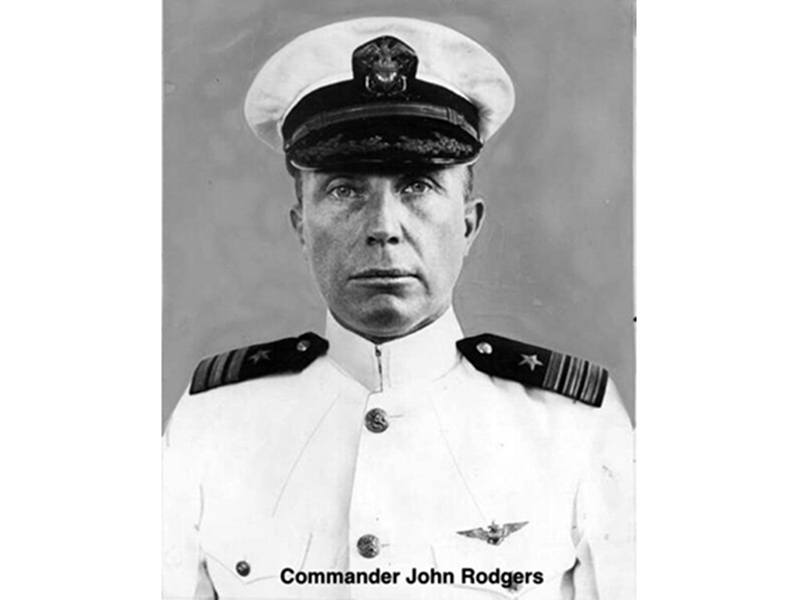Born in Washington D.C., Navy Commander John Rodgers (1881-1926) was a graduate of the Naval Academy, Class of 1903, and served on various ships before training to become the second Navy flight officer.
What follows is an account of his forced landing at sea off Kaua‘i in 1925 and his subsequent rescue.
On Aug. 31, 1925, two Navy PN-9 seaplanes took off from San Pablo Bay, north of San Francisco, to attempt the first nonstop flight from California to Hawai‘i.
One of the seaplanes broke an oil line and was forced down at sea 300 miles out of San Francisco, where its crew was picked up by a rescue vessel shortly thereafter.
But, the other seaplane, piloted by Commander Rodgers, flew on toward Hawai‘i until it ran out of fuel and was forced to land at sea due east of Kaua‘i on Sept. 1.
Soon after, Rodgers and his crew made sails from canvas stripped from the lower wing, and tore out cockpit floorboards for use as leeboards to reduce drift to the leeward side and to maintain a course toward O‘ahu.
On Sept. 9, O‘ahu was sighted, but current carried the seaplane past it and Rodgers set a new course for Kaua‘i.
By this time emergency rations were nearly gone, yet fresh water was plentiful thanks to the still Rodgers’ mother had given him with which he distilled seawater.
While drifting past Kaua‘i the following day, Sept. 10, Rodgers’ seaplane was 8 miles off Ahukini and the crew was flashing mirrors and waving shirts to attract attention of someone on the distant shore.
Meanwhile, the Navy submarine R-4 cruising seaward of the seaplane on a routine patrol spotted the seaplane, but so intent was Rodgers’ crew at signaling shoreward that the submarine came within 100 yards of them before they noticed it.
Rodgers and his crew remained aboard their seaplane, while the submarine towed it to Nawiliwili.
It was anchored at Niumalu and the exhausted men were driven to the Lihu‘e Hotel as guests of Sheriff William Henry Rice.




